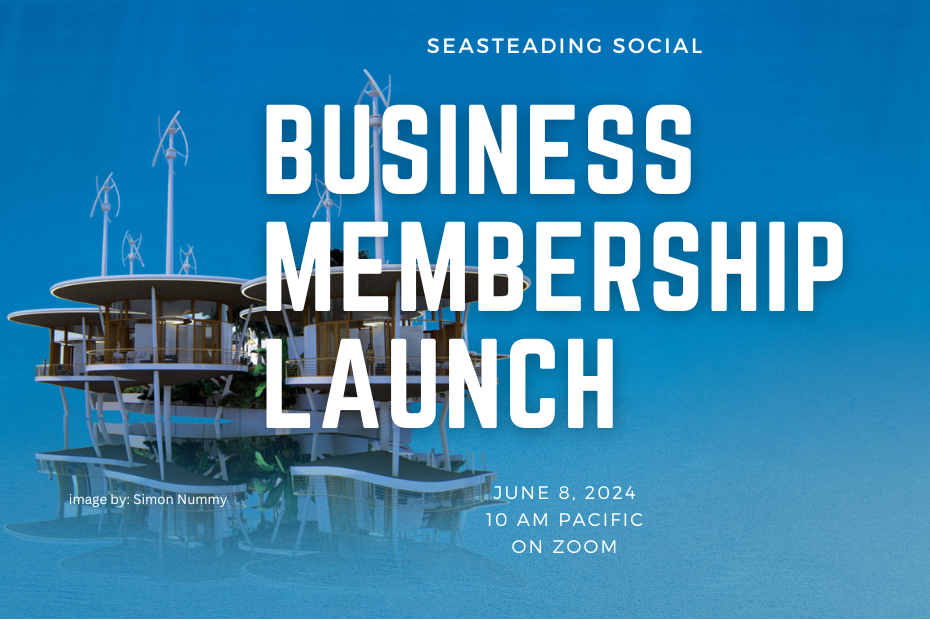One of our favored business models has been the CoastStead – a business park operating 12nm offshore, just outside territorial waters. Being able to draw from the economy of a first-world country makes it much easier to make money and finance a seastead.
However, our recent legal research has determined that this model may not work with existing international law. While a ship is under the flag jurisdiction beyond 12nm, artificial installations are regulated by the coastal state throughout the EEZ (200nm or more). The relevant definition seems to be:
“Artificial islands and installations are man-made, surrounded by water from all sides, above water at high tide, supposed to stay at a specific geographical location for a certain span of time, and stationary in their normal mode of operation at sea.” [Fitzpatrick1998]
So any CoastStead – even an anchored ship – which is designed to stay in one place, or operate while stationary, would meet this definition. This suggests that initial seasteads must either be mobile, or be located more than 200nm from land. Spar platforms can be made mobile, but they will have increased fuel costs and be slow to move, so it will be harder to use them for mobile operations. So uf we want to start with near-shore operations as our first incremental step, ships and mobile single-family seasteads now appear more attractive, while spar platforms may have to wait until we are ready to leave the EEZ.
While this is unfortunate, we’re glad to be learning more about international law so we can craft accurate recommendations, and we thank legal volunteer Jorge Schmidt for his contributions.


Wow, 200 nm is like the deep blue sea, and beyond the horizon. There’s something psychologically reasurring about being able to see the continent if you ask me. Something that far out will create a completely different dynamic.
Couldn’t you do everything you wanted to do on the platforms aboard ships? For instance medical tourism would still seem to be possible:
http://www.find-health-articles.com/rec_pub_10495629-surgery-aboard-ship-safe.htm
Ships use a lot of fuel, probably enough to mess with the financial and eco dynamics of such ventures. However algae is a very good biofuel. In theory there could be a decent match. I would start experimenting with self contained algae ponds being dragged behind slow moving boats.
It would definitely be doable with a big enough farm. The biggest problem would be other vessels running them over. Easier to just pay for your fuel? Who knows.
It seems like doing anything in the US’s EEZ would be problematic, even with ships.
http://www.nauticalcharts.noaa.gov/csdl/mbound.htm
The Exclusive Economic Zone (EEZ) of the U.S. extends 200 nm from the territorial sea baseline and is adjacent to the 12 nm territorial sea of the U.S., including the Commonwealth of Puerto Rico, Guam, American Samoa, the U.S. Virgin Islands, the Commonwealth of the Northern Mariana Islands, and any other territory or possession over which the United States exercises sovereignty. Within the EEZ, the U.S. has (a) sovereign rights for the purpose of exploring, exploiting, conserving and managing natural resources, whether living and nonliving, of the seabed and subsoil and the superjacent waters and with regard to other activities for the economic exploitation and exploration of the zone, such as the production of energy from the water, currents and winds; (b) jurisdiction as provided for in international law with regard to the establishment and use of artificial islands, installations, and structures, marine scientific research, and the protection and preservation of the marine environment, and (c) other rights and duties provided for under international law. (See Presidential Proclamation No. 5030 of March 10, 1983.)
I think you should always build seasteads to be as mobile as possible. Anything else goes against the nature of the sea. Designs that are both low-drag and stable while stationary are catamarans and SWATH and similar. Having the ability to run away from storms means you can decrease the specs and save money.
The rules of the EEZ basically sucks, and will give the sovereign power plenty of excuses to harass you even if you follow them. However 200nm is not that far. A couple of hours by air for people, and a couple of days for freight. TSI should abandon the EEZ altogether.
response to Patri
Keep in mind that whatever definitions, legal or otherwise, are changable due to the unrelenting (and humbling and aggravating) ingenuity of the human mind… in it’s quest to serve itself.
Eventually seasteads would probably want to move out of someone else’s teritorial waters, but for starting up, they would probably want to be near an existing state to tap into its people as a customer base, tap into its resources, etc.
The key word is stationary. Just make clubstead drift around and occasionally power up the propulsion system to reposition up current or up wind or into different currents or winds. If anyone needs to find you just give them the current or expected latitude and longitude. Or power to a specific location to meet at a particular time. If the platform is non-stationary, then I would assume it woudl fall under the laws of ships.
That said, I still like ships better for initial steps.